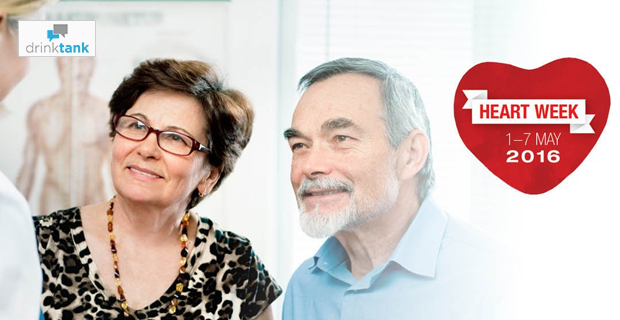This week is Heart Week, a time when we reflect on how far we have come in the prevention, treatment and research of cardiovascular disease (the disease group consisting of heart, stroke and blood vessel disease) and – sadly – how far we have to go.
While we have made great gains in reducing death rates from heart, stroke and blood vessel disease over the past five decades, the task ahead is large and changing.
Despite lower mortality rates, coronary heart disease remains the single leading cause of death for Australians, with more than 20,000 deaths in 2014.
Around 55,000 Australians have a heart attack every year. That’s one every ten minutes.
There are 4.2 million people living with some form of cardiovascular disease (CVD).
And in terms of direct healthcare costs, CVD is the most expensive disease at $7.7 billion a year, or 10.4 per cent of Australia’s total healthcare costs.
In many ways, the Heart Foundation shares the challenges faced by the Foundation for Alcohol Research and Education (FARE).
The burden of disease we are attempting to tackle is immense. And yet the harm done is, to a significant degree, preventable.
Our biggest barrier to progress is complacency.
Much can and should be done to address the large gaps that exist between the current approach to prevention, early detection, treatment and research and what could and should be happening to reduce death and suffering from CVD.
Perhaps the most evident sign of complacency is the lack of a national action plan for heart disease and stroke. Despite the fact that CVD was designated as one of the inaugural national health priorities 20 years ago, we still have no dedicated plan to address the gaps and improve care.
There is plenty that can be done. This Heart Week, we are placing the spotlight on cardiac rehabilitation.
For those that survive a heart attack, attending cardiac rehabilitation is one of the best way to prevent another, often fatal, heart attack from happening.
But in a survey of 1,800 heart attack survivors, we found that only 38 per cent of patients who have had a heart attack were advised by hospital staff to attend cardiac rehabilitation programs.
This figure is alarmingly low, considering that increased attendance of cardiac rehabilitation programs could reduce costs to the national health system by more than $35 million and stop 2,100 Australians having a heart attack annually.
State governments need to invest more in cardiac rehabilitation while the federal government could assist by funding a national audit, to provide the data needed to drive change and improve outcomes.
Another mission we share with FARE is getting greater support for primary prevention. While Australia is a world leader in tobacco control, we are performing well below par when it comes to addressing other risk factors for CVD, including physical inactivity, overweight/obesity, poor nutrition and alcohol misuse.
Australia ranks in the bottom third of OECD nations when it comes to spending on public health. The Health Expenditure in Australia 2013-14 report reveals that public health investment was a woeful 1.5 per cent of total healthcare spending, down from 2.3 per cent in 2007-08. We should aim to build this over time to at least five per cent. This should not be hard, given New Zealand, the class leader, is at seven per cent and Canada on 5.9 per cent.
This can effectively be done at no additional cost to the budget bottom line by offsetting the needed investment through needed increases in ‘corrective’ taxes, or health levies, on tobacco, alcohol and potentially sugar-sweetened beverages as well.
The case for a good look at the merits of a health levy on sugary drinks is getting stronger. Mexico introduced a tax of one peso per litre on sugar-sweetened beverages and an eight per cent tax on a list of highly energy dense foods in 2014. The study published in the British Medical Journal found that in the first 12 months, consumption of sweetened beverages in Mexico had reduced sales by 12 per cent. In March this year, the British government announced it will place a levy on the manufacturers of sugary soft drinks that will raise more than $1 billion a year and has the potential to be a ‘game changer’ by taking such a strong international lead.
As we move towards a federal election in Australia, all major parties need to commit to investing in prevention, both primary and secondary, and to offset this through a robust approach to taxation of tobacco, alcohol and sugary drinks.
The major parties must also support early detection through absolute cardiovascular risk assessment and the ‘integrated health check’ (combining the risk assessment with a diabetes and kidney check), boost cardiovascular research funding, renew the commitment to addressing rheumatic heart disease and develop and fund a national action plan for heart disease and stroke.
By doing so, the next government will help reduce death and suffering from heart disease and ease pressure on our hard pressed health budgets.
It’s time to end our complacency.








Add comment